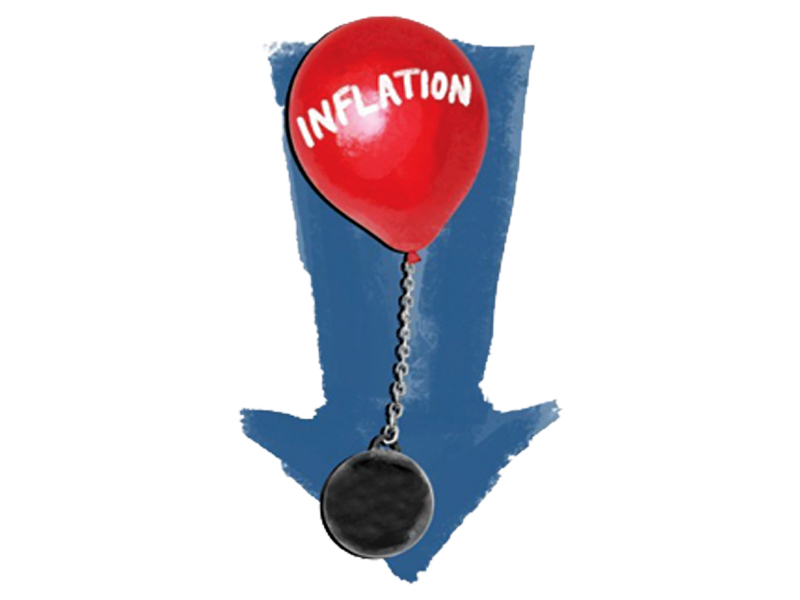
Pakistan’s inflation rate sharply dipped to 23.1% last month – the slowest pace in the past 16 months – due to a steep reduction in food inflation coupled with a high base effect, creating room for an interest rate cut by the central bank.
The 23.1% inflation rate for February was even lower than both market and government expectations. A day earlier, the Ministry of Finance had projected a range of 24.5% to 25.5% for February’s reading.
There has been a marked slowdown in food inflation, non-food inflation, and core inflation indicators, underscoring that the overall faster pace may now start to slow down.
The Pakistan Bureau of Statistics reported on Friday that the inflation rate eased to 23.1%, marking the slowest pace since November 2022 when the reading was 23.8%. The slowdown was observed across urban and rural areas, with rates easing to 24.9% in cities and 20.5% in rural areas.
Despite this, the central bank has maintained the policy rate at 22%, the highest rate since 1972 and deemed unjustifiable as inflation in Pakistan is mostly driven by administered price increases or food supply shocks.
Interest rates are higher than the core inflation rate, significantly increasing government borrowing costs to a record Rs8.3 trillion for this fiscal year. The PBS inflation bulletin showed that there was a reduction in the prices of food and energy items, which further eased in both rural and urban areas.
The non-food inflation rate in urban areas slowed down to 28.2% and to 22.1% in rural areas, albeit still at very high rates. Items like wheat flour, rice, tea, sugar, beverages, potatoes, and pulses saw a significant increase in their rates last month compared to a year ago.
Food inflation decelerated in cities and rural areas, with rates slowing to 20.2% and 19%, respectively, according to the PBS.
Prices of essential commodities still remain unbearable, particularly kitchen items. Onions per kilogram remain in the range of Rs250 to Rs300. People’s purchasing power has significantly shrunk due to constant doubledigit increases in prices of essential and durable goods. Successive governments have also significantly increased the tax burden, particularly for the salaried class.
Read Inflation spikes on food, energy costs
The interim government increased the price of electricity and gas under the International Monetary Fund (IMF) deal, which kept overall prices high. The PBS bulletin showed that gas was expensive by 380% while electricity charges were higher by 72% in January compared to a year ago.
A day earlier, the interim government further increased petrol prices due to an increase in international markets.
The exchange rate has remained stable, and it is expected that the inflation rate may further slowdown in the coming months due to a higher base impact. Yet, the government will miss its annual average inflation target of 21%.
Core inflation, which is calculated after excluding energy and food items, eased to 15.5% in urban areas and 21.9% in rural areas. The average core inflation is now significantly lower than the policy rate.Core inflation was also at its lowest level in over one year.
Former State Bank of Pakistan governor, Dr Reza Baqir, agreed with the IMF that Pakistan would set the interest rate in line with the general inflation rate by disconnecting it from the core indicator. As a result, the central bank has been unable to lower interest rates despite a slowdown in core inflation. This has massively increased the cost of interest payments on loans, which is now more than the federal government’s net income.
There was still a double-digit increase in prices of all 12 groups of commodities monitored by the PBS every month. Prices of food and non-alcoholic beverages were higher by 18% last month compared to a year ago. Non-perishable goods prices also saw an 18% increase, while the ratio was nearly 19% for perishable goods and far less than the preceding month.
The government and the central bank are again set to miss their annual inflation target of 21%. The PBS reported that for the July-February period of the current fiscal year, the average inflation remained at 28%, far exceeding the official target of 21% for the current fiscal year. The average inflation rate for the first eight months in rural areas was 28.1%, whereas it was 27.9% in urban areas.
The PBS also released the weekly inflation figure, based on the Sensitive Price Index – the group of commodities largely used by all households.
The SPI-based inflation rate increased to 32.7% in the last week of February due to a 570% surge in gas prices.




















COMMENTS
Comments are moderated and generally will be posted if they are on-topic and not abusive.
For more information, please see our Comments FAQ